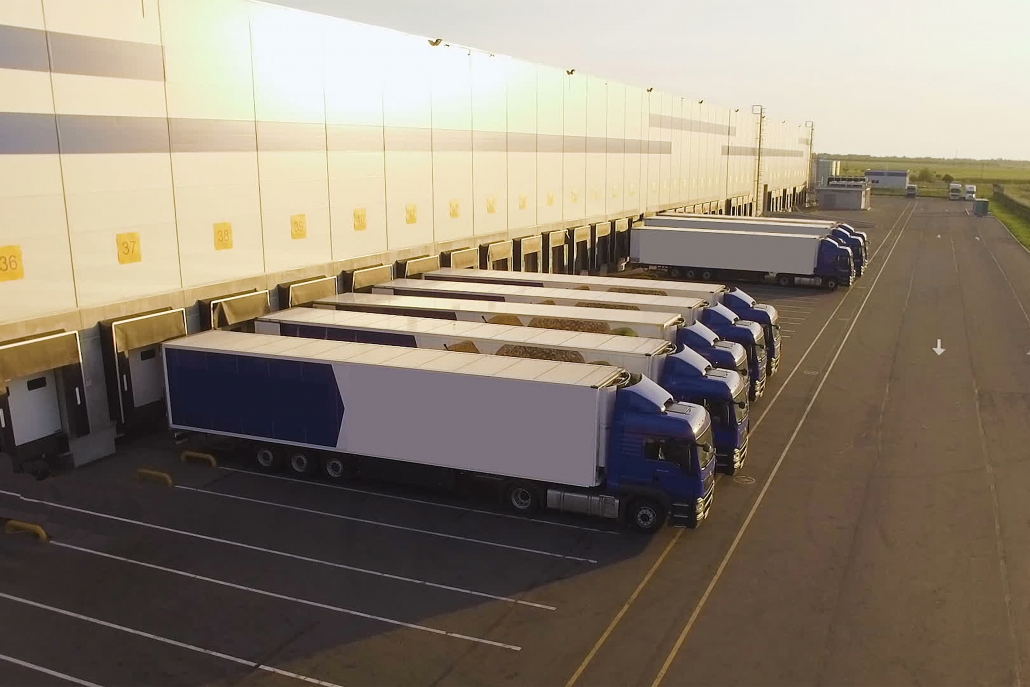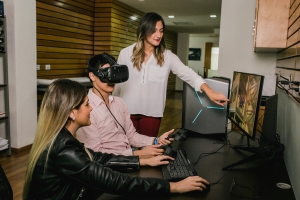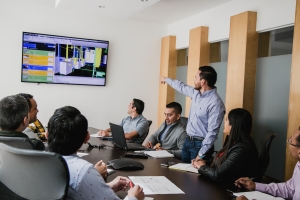Key Benefits = Cultural Competence
In addition to the excellent communication of the team, a team’s lengthy experience and deep understanding of the construction market in Mexico is one of the major differentiators that contribute to such a project’s success.
For example, there are many firms in Mexico that subcontract and use freelancers to complete engineering, while a single architect unites the project. With multiple disciplines working together as a single entity, working on the same model at the same time, the team can identify issues immediately and address them quickly.
A project management structure, including coordination and documentation, is uncommon in Mexico, however. Typically, when an owner hires a firm in Mexico, the owner deals directly with the architect. The architect incorporates the work of multiple disciplines, a task that normally would fall under the project management umbrella.
While most Mexican firms are architect-led firms, an engineering-led firm on such a project can provide more of a hands-on experience that resonates with mega retailers focused on detail. That way, instead of a typical architect lead’s focus on a single-discipline point of view—which risks losing sight of other engineering-led solutions—the design team can bring a project management structure that assures all solutions can be correctly managed across the multidisciplinary design team.
Consider an example. In Mexican distribution centers, the new system that retailers are exploring and pushing more is Automated Storage & Retrieval Systems (ASRS). For some retailers, this impacts drastically on labor resource and increases flexibility and control of their storage.
In general, when having an ASRS, the building is taller than one with a standard racking system. This allows the storage of goods to be higher and makes the rack area itself smaller—but because of the need for hallways around the rack area, these buildings’ dimensions are still similar to a traditional distribution center.
A project team that has utilized these systems before on other international projects has technical expertise that enables mega retailers to break new ground with their distribution center.
To innovate in this way requires exceptional cooperation among stakeholders and the project team. Responsiveness and awareness of both commitments and schedules are key to get the high level of cooperation required.
In Mexico especially, communication and schedules are often a challenge. Availability for conversations and making time to meet—even if that means traveling—builds trust. When stakeholders trust a project team’s commitment, they will trust the advice, comments, and ideas that come out of the collaboration.
Stakeholders are likely to provide more information as the professional relationship builds, resulting in a level of transparency that takes communication to the next level. Once trust is established, with responsiveness as a key differentiator, the communication is seamless.
Insights = Standardization
One of the keys to efficiency in this process is standardization, which optimizes design, construction, and operation, once it is implemented. Standardization is a natural byproduct of working in BIM. With a model, design teams can collectively walk into and improve the design collaboratively. Once it is complete, teams can standardize the design for future distribution centers.
One unique aspect of such projects is the focus on equipment procurement. Not every company buys equipment through internal channels, but since many mega retailers do, they want an easier way to do so.
For a project team, a simple click provides a comprehensive list of materials and equipment. This approach virtually eliminates human error, generating an equipment list directly from the model data than can be handed over to purchasing. This approach is easier and faster.
It is important for such projects to establish a standard of distribution in Mexico.
Especially in light of the current political climate, much attention is on international relations between Mexico and the United States, and a project of this nature helps bolster trade partnerships.
And, such a project offers many cutting-edge elements, including high-quality renderings and walk-throughs, all generated through collaborative participation. All of the internal support, coupled with the expertise of a project team, means that retailers can hit the distribution center market in Mexico ready to lead – forging innovation in transition.
Ing. Erick Kuri is the Mexico Business Leader at SSOE Group (www.ssoe.com), a global engineering, procurement, and construction management firm. With nearly a decade of in-country experience as a manager and engineer, Erick has extensive project knowledge with automotive / manufacturing facilities and distribution centers in dozens of cities throughout the Mexican industrial corridor. In addition to having local resources and knowledge of the Mexican construction market, Erick is able to execute projects more quickly and more cost effectively for SSOE’s clients. He can be reached at 52.477.391.0420 or by email at erick.kuri@ssoe.com.


